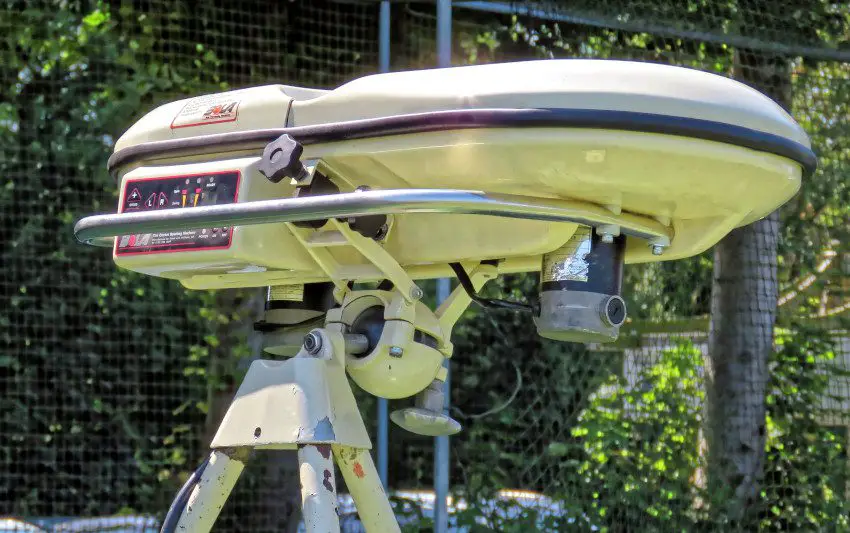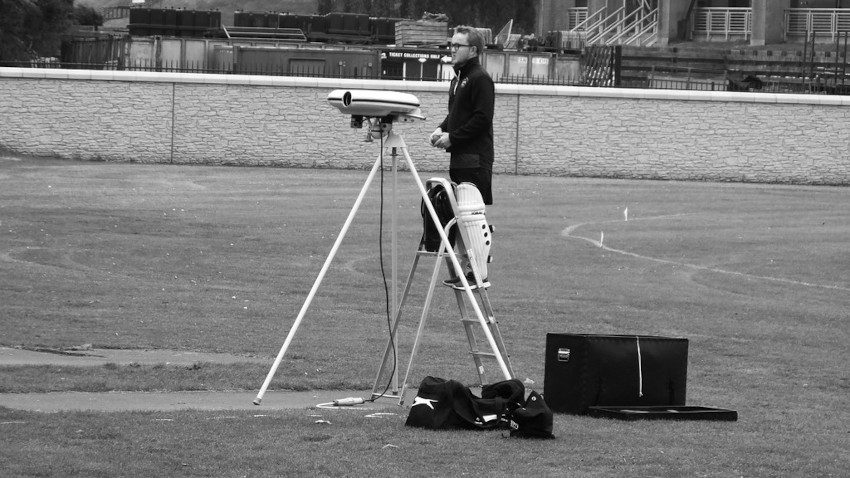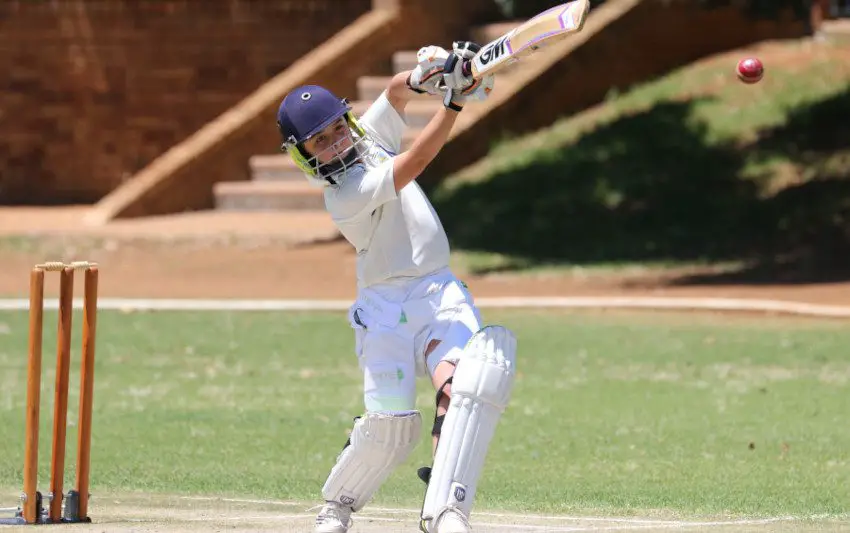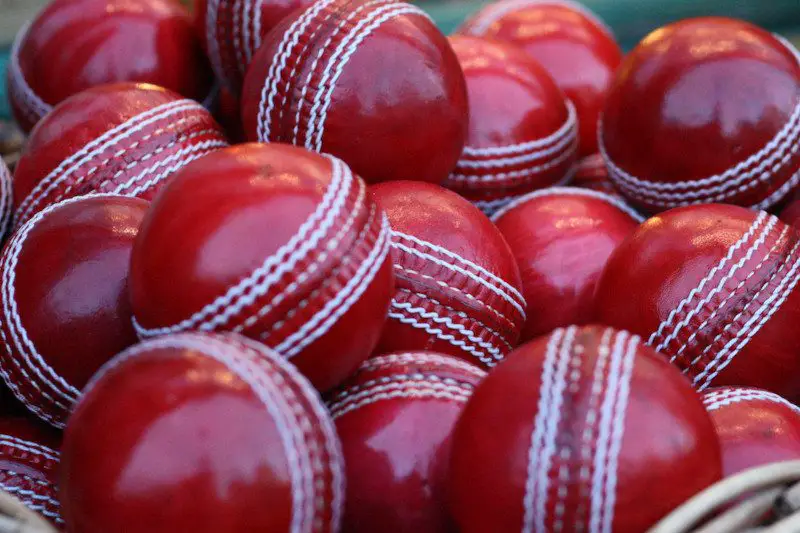Table of Contents
They are one of the most useful pieces of equipment for batsmen in training and a modern cricket bowling machine is very versatile. All speeds and styles of bowling can be mimicked so let’s take a closer look at how it all works.
Motor vs Manual Bowling Machine
There are a number of different ways in which coaches and teammates can help batsmen to improve their techniques.
Manual
There are many manual throwing devices on the market, several of which are similar to those which are used to throw tennis balls for dogs. The ball is clasped and used like a slingshot to deliver to the batter.
This is a useful device for very basic throwdowns but the maximum speed can’t compare to mechanical devices. For more advanced training, a bowling machine is recommended.
Motorised Machine
There are two distinct types of bowling machine available. The first is generally referred to as a mechanical machine and this is driven by an electric motor. Two large wheels process the balls which are fed into the device by a coach.
The second type of motorised cricket bowling machine works with pneumatics. It can store a larger number of balls which are then shot out of the device at regular intervals.
Which Motor is Used in the Bowling Machine?
The majority of machines use induction motors. Powered by electricity they can plug into a socket while most will also work with rechargeable batteries.
A small set of machines use pneumatic technology to deliver the balls.
Cricket Bowling Machine Motor RPM
Revolutions per minute, (RPM) are talked about in terms of spin bowling but they are not really discussed for bowling machines. There are claims that devices use around 2,300 RPM but it’s more about the speed of delivery rather than the revs on the ball.
How Fast can a Bowling Machine Bowl?
The maximum speed of any motorised bowling machine currently on the market is 170kph which equates to around 105 miles per hour.
It may come as a surprise to learn that manual cricket bowling machines can reach respectable speeds of 160+ kph (100+) mph, depending on the exact make of the device. Remember that the intention is to mirror the type of speeds found in a match situation so it wouldn’t be ideal to have a machine that can produce numbers in excess of those figures.

Cricket Bowling Machine Speed Chart
Cricket Bowling Machine | Speed |
Yantra Intelligent Bowling Machine | Up to 170kph |
Bola Professional Cricket Bowling Machine | Maximum Speed up to 152kph |
Bola Junior Bowling Machine | Up to 152kph |
Heater Sports Deuce 2 | Up to 144kph |
Paceman Bowling Machine ProX2 | Up to 110kph |
Paceman Strike | Up to 100kph |
Ovafly Bowling Machine | Up to 96kph |
Heater Sports Slider | Up to 96kph |
Net World Sports Paceman | Up to 90kph |
Speed Buddy Cricket Bowling Machine | Up to 90kph |
Fastest Cricket Bowling Machine
The fastest available bowling machine at the moment is the Yantra Intelligent device. As seen on this chart, it is capable of sending balls down at speeds up to 170kph which equates to around 105 miles per hour.
Which Ball is Used in the Bowling Machine?
It is possible to buy balls which are specially designed for a cricket bowling machine. These are made of a hard plastic and are ideal for this type of device.
If they are not available, you could use a regulation cricket ball or anything which carries a similar size and weight. Training balls can be used at times while some of the junior machines are designed to work with tennis balls.
Cricket Bowling Machine Repair
Prevention is better than cure when it comes to cricket bowling machines. Repairs can be expensive so it’s essential that they are well maintained and looked after.
In manufacturer’s guides, there should be a section on maintenance which you should read on purchasing a product.
- After use, always use a damp cloth to remove grit and dirt and avoid using solvents or petroleum based products in the cleaning process.
- When not in use, store the machine in a clean, dry area and cover with a dust cover.
- If there are tyres attached, clean and scrub these and check on the recommended tyre pressure as published by the manufacturer.

Bowling Machine Drills for Cricket
The important thing to remember is that a top-of-the-range cricket bowling machine is adjustable. If, for example, a batsman is struggling with the short ball, it can be set up to deliver at a certain length every time. If human net bowlers are used, that repeatable length cannot be guaranteed.
Machines can, therefore, be tailored to work on a specific weakness in a player’s game. Alternatively, they can be changed to provide the type of wide ranging bowling that a batsman would typically receive in a match.
In short, they are very versatile and the drills can be designed specifically to suit the coach and the needs of the batsmen.
Surface to Place a Bowling Machine on
A cricket bowling machine can be placed on any level surface. Concrete is ideal for use in the nets and matting of any material is suitable in these situations.
Outdoors, grass can be used but the machine should be as level as possible in order not to distort the trajectory. Note that many devices come with built in wheels for extra mobility.
Advantages of Cricket Bowling Machines
The more advanced bowling machines can now mirror virtually any type of delivery that you will receive in a match. We’ve seen how they can change their pace and that’s very important in the modern-day game where bowlers send down so many variations.
The equipment can go much further to mimic swing, seam, spin and it can also be set up to imitate right arm and left arm bowlers and those who deliver over or round the wicket. Length can also be varied so there is a great all-round package on offer here.
Do Bowling Machine Balls Damage Bats?
No matter how capable and focused you are as a batsman, the bowling machine balls used in machines can effectively damage bats and break handles even at moderate speed due to the ball’s hardness. The ball used is quite hard to grip hence it is only used to train batsmen through ball machines to get them familiar with the roughness and pace of the ball before an important match or series.
It is not a surprise for players but a bat will deteriorate with use against bowling machine balls. They hit the bat hard on its face and hence the amount of effort put in by the player and the force from the bat wears out the durability which results in some damage to occur.
These bowling machine balls are often used by international cricketers for practicing the pace and bounce with a swing concerning the weather conditions. It’s not just the match practice it provides, but some players also use bowling machines for knocking in new bats. The balls are hard and what better to knock your bat with than a fast-paced hardball similar to the match experience.
Should I Use My Bat With Bowling Machine?
Should one use a bat with a bowling machine is quite a debatable question considering your bat means everything to you. However, a clear anti-scuff will help protect the face of the bat, but balls may leave green marks. Having protection on the bat and getting some marks is better than the bat facing damage during practice.
On the other hand, having a ‘practice’ bat for such occasions is certainly a blessing in disguise. A lot of cricketers, especially international players, use their practice bats to face the bowling machine. Normally an old bat is practical if you wish to practice on a bowling machine. It also helps wipe out your fear and hesitation to play against the machine to avoid damage to your bat.
Conclusion
A bowling machine can be a great investment for both individuals and clubs. If budget is an issue, a manual device will do a job and it can certainly help with batting techniques.
For more serious club sides, there are so many advantages to modern cricket bowling machines and it’s therefore worth making an investment if you can.


